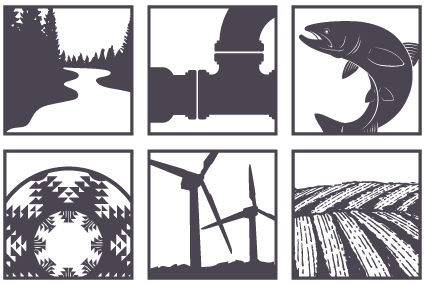North Coast Forest Biomass Strategy
The North Coast Resource Partnership (NCRP) and the Watershed Research and Training Center (WRTC) partnered on a multifaceted initiative to collect, aggregate, and process woody biomass produced from projects that reduce hazardous fuels in the region’s forests and landscapes. This North Coast Feedstock Aggregation Pilot Project will help drive community and landscape-scale fire hazard reduction, watershed health, and economic resilience. This initiative was part of the broader North Coast Resilience Plan that the NCRP developed in collaboration with a wide range of regional partners and local experts, which lays out comprehensive priorities for enhancing watershed, fireshed, forest, and community resilience.
Final Report
Learn more
Enhancing Community Watershed, Fireshed, and Economic Resilience Through Improved Woody Biomass Utilization
The North Coast Forest Biomass Strategy Feedstock Aggregation Project, funded through a contract with the Governor’s Office of Land Use and Climate Innovation (LCI), supported efforts to increase the pace, scope, and scale of fuel management efforts in the region, and provided multi-benefit alternatives to open pile burning of the woody biomass produced from hazardous fuel management activities on private, non-industrial parcels. The initiative explored mechanisms that could help communities enhance the efficient, productive, and sustainable collection and utilization of this woody biomass and provide economic benefits to existing and new businesses, supporting the vitality of the stewardship economy.
This was an exciting opportunity to craft real-world, multi-objective solutions to complex problems. Success required developing common ground among an array of sectors collaborating to achieve regional and local innovations that support community and watershed resilience, including economic vitality, climate adaptation, fuel load reduction, community health and safety, and natural resource protection and enhancement.
North Coast Forest Biomass Strategy Final Report and Appendices




